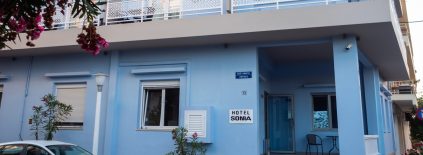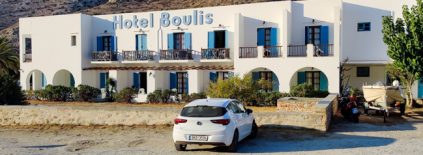Introduction
What is Island Hopping, and Why Should You Try It?
As the name suggests, island hopping involves splitting your holiday across multiple destinations to experience as much of Greece as possible in the time available. Though many Greek islands share similar elements – great beaches, delicious food and fascinating history – each island has its own unique story to tell and secrets to explore. With over 150 inhabited islands, you could never hope to see them all if you only travelled to a single island each visit, but with island hopping, you can tick off several destinations in one unforgettable trip.
For those fascinated by Greece’s unique history and rich culture, island-hopping is the perfect solution: pick a selection of islands within a comfortable ferry distance and turn your holiday into a real Greek Odyssey!
New Video Guide
We’ve recently created a video guide on island-hopping, check it out below:
Our Island-Hopping Experiences
Despite regular holidays to Greece spanning more than 30 years, it wasn’t until the summer of 2017 that we embarked on our first multi-island adventure. Since then, we’ve spent over 200 nights exploring the country on several island-hopping holidays, including almost 90 days each in the summers of 2021 and 2022.
These experiences taught us so much: not only why island-hopping is such an amazing and worthwhile endeavour but also how to plan and execute the trips to maximize the experience and minimize cost and stress. In this guide, we’ll share everything we’ve learned over the past eight years so you can make the most of your Greek adventure and avoid common pitfalls.
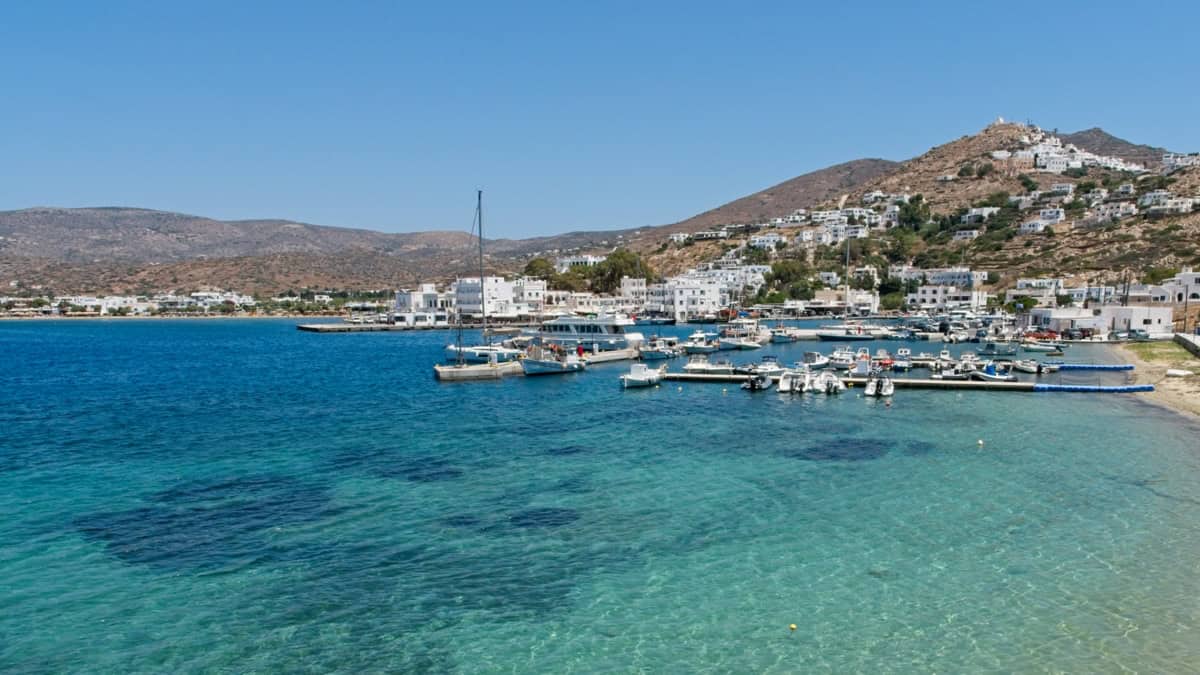
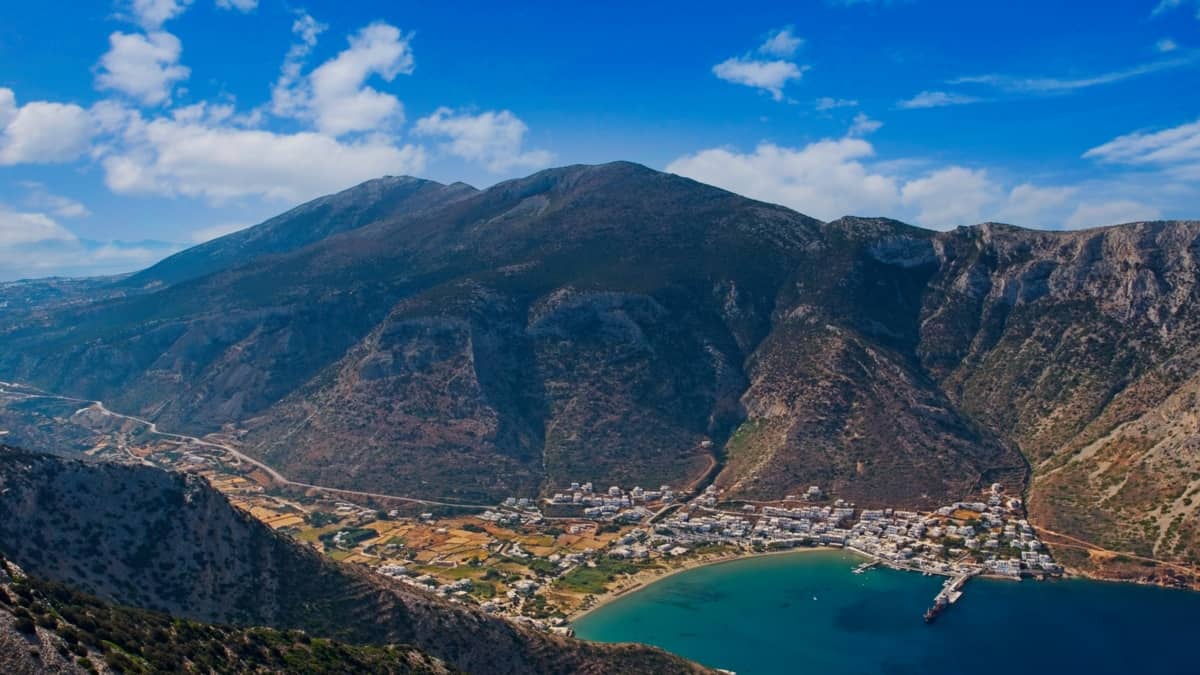
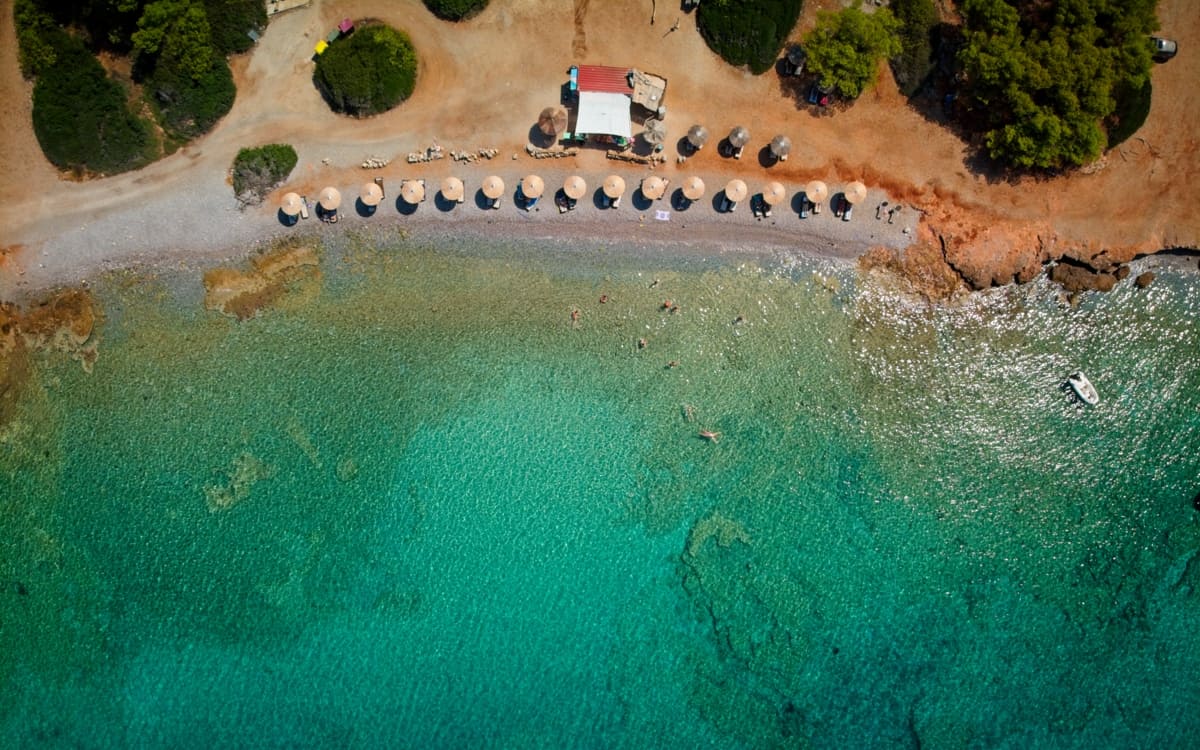
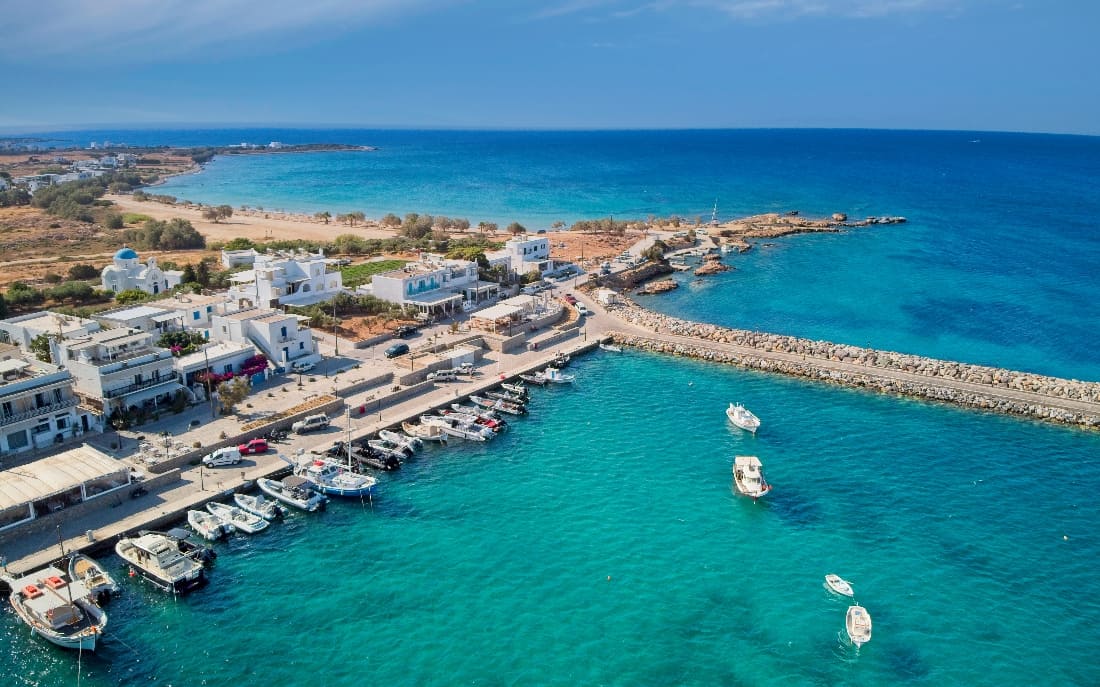
Part 1: Deciding How Many Islands to Visit
Having decided to embark on an island-hopping holiday, the temptation to plan an over-ambitious itinerary usually results in a rushed and unsatisfying experience. You’ll incur significant expenses on ferry tickets and transfers, wasting valuable time constantly moving from place to place without ever enjoying the ground underneath your feet.
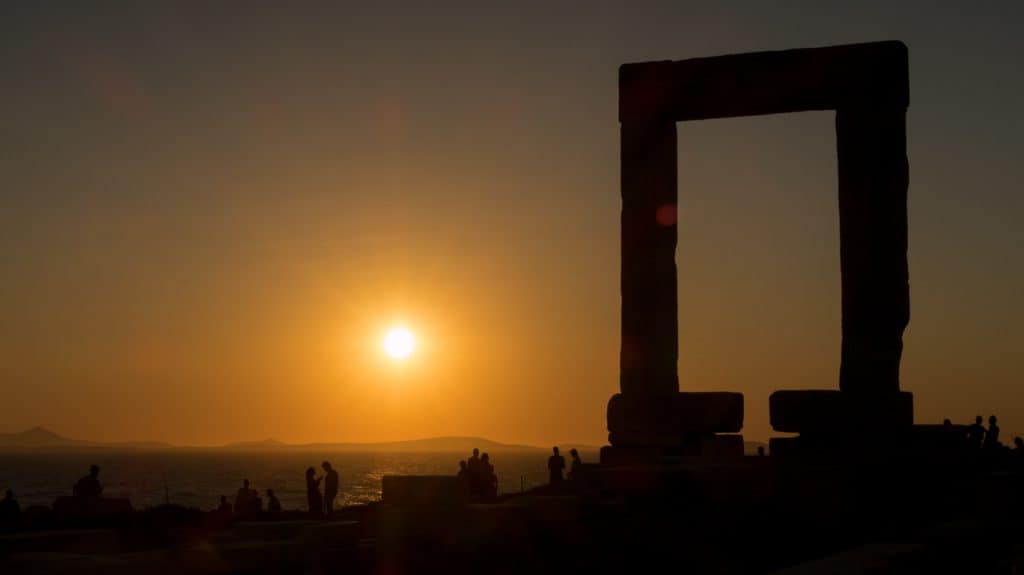
Setting the right pace for your holiday is one of the most challenging aspects of island-hopping. Personal preference plays a huge role here: some people are happy to be always on the move, living out of a suitcase (or backpack), while others prefer a more leisurely tempo with time to unpack, rest and relax. Regardless of which one you identify with best, we’ve figured out some sensible guidelines for choosing the correct number of islands for your trip.
How many nights to spend on each island
Our advice is to spend no less than three nights per small/medium island and four or more nights for larger ones. Stopping longer is fine if you’ve got the time, but on the few occasions we’ve attempted one- or two-night stays, it never felt like we saw the island before it was time to move on again. Our only exception to this has been when we’re travelling between more distant islands or where there’s no direct ferry connection and we decided to stay for a night or two to ‘get a feel’ for an island with the intention of returning for a longer visit in the future. If you’re visiting Greece from outside Europe, you probably won’t have this luxury so it’s best to choose fewer islands and stay longer, accepting that you can’t visit everywhere in one trip.
Don’t forget that you’ll typically spend half a day changing islands: packing, getting to the ferry port, the ferry journey itself and getting to your next hotel. We consider this part of the experience and it can add excitement, but it does mean that short stays will feel even briefer. We’ll talk more about itineraries later in the guide, but remember that less is often more when choosing how many destinations you’ll visit.
Part 2: Which Islands To Visit
Nothing is more personal than deciding which islands you want to see. Once again, though, there are practical considerations to make if you want the trip to succeed. Choosing a suitable set of islands can involve lots of research and compromises, but the advice below will help you narrow things down.
Greece is a deceptively large country, and the distance between some islands is significant. Unless you’re prepared to spend many hours on long ferry journeys or flying back and forth to Athens (most internal flights go via the capital and not directly between islands–something that’s often misunderstood), you’ll want to choose islands that are fairly close together. This is what puts the “hop” in island-hopping.
Greek islands are grouped into clusters or archipelagos. These archipelagos are named and include the following:
a. The Ionian Islands
This island group lies on the western side of mainland Greece and includes well-known destinations such as Corfu, Kefalonia, and Zakynthos (Zante).
b. The Argo-Saronic Islands
This small group of islands lies southwest of Athens, making it a popular choice for Athenians and those who want a convenient Greek island experience without straying too far from the mainland. Islands include Aegina, Agistri and Hydra.
c. The Sporades Islands
The Sporades are a small cluster of islands in the north-central area, including destinations such as Skiathos and Skopelos.
d. The Cyclades Islands
A large group of islands in central Greece. This is perhaps the most well-known cluster, including world-famous destinations like Mykonos and Santorini. Other popular choices include Naxos, Paros, Antiparos, Folegandros, Ios, Amorgos and Koufonisia.
d. The Dodecanese Islands
Located close to the Turkish coastline, the Dodecanese islands are in the far south-east of Greece. Popular destinations include Rhodes, Samos, Kos, Karpathos and Kalymnos.
Choosing islands within the same group is a great place to start when planning an island-hopping holiday. Most islands within a group are directly connected on regular ferry routes, so getting between them should be relatively easy. Popular routes run daily during the summer tourist season, between May and October, and busier islands often have multiple connections via several ferry operators.
It is possible to transit from one island group to another by ferry. However, these crossings typically take longer and only link the nearest islands between groups, limiting travel options.
Part 3: Reaching Your First Island – Ferry or Flight?
Athens is the main international airport for long-haul visitors, so if you’re travelling from outside Europe, you’ll need to decide how to get from the mainland to your first island. Internal flights are generally the quickest option since you’ll already be at the airport. Prices vary but can be on par with increasingly expensive high-speed ferry tickets, though you will usually need to factor in additional charges for luggage, which is free on most ferries. It’s also important to be aware that luggage size and weight limits are often lower on internal flights, so don’t get caught out with oversized baggage or surcharges for heavy items.
Travelling by ferry from the mainland involves getting from the airport to one of three ports: Piraeus, Rafina or Lavrio. Piraeus is the main port and provides access to most islands. It’s located west of the airport in central Athens. Rafina is closer to the airport on the eastern coastline but mainly serves the northern Cyclades (Andros, Tinos and Mykonos). Lavrio is a smaller port south of Rafina on the east coast and serves the western Cyclades islands of Kea, Kythnos, Milos and Kimolos.
Most island ferries depart mainland Greece early in the morning and return late at night, so depending on your arrival time, you may need to factor in an overnight stay in Athens to make your ferry connection practical. Some visitors use this time to see the historic capital’s many attractions. However, it’s usually best to do this when you return to the mainland at the end of your trip: you’ll be less jetlagged, more acclimatised to the weather and more relaxed. Several airlines run multiple daily flights to and from popular islands, so it is more likely you could make a same-day island connection if you fly, and this is what we recommend unless you’re very budget-conscious and want the cheaper ferry option.
Once you reach your first island, travelling by ferry should be the preferred option: inter-island ferries are generally cheap, regular and have plenty of capacity even in high season. Between popular islands, you’ll have a choice of ferry companies offering several crossings per day, allowing you to choose a time and style of boat that suits your needs and budget (more on ticket prices below).
Islands with airports don’t always offer direct flights with other islands, as these are typically used to travel to and from the mainland. Finishing your trip on an island with an airport can be helpful if you want a faster way of returning to Athens ahead of your flight home, so this is worth bearing in mind when deciding on the order of islands in your itinerary.
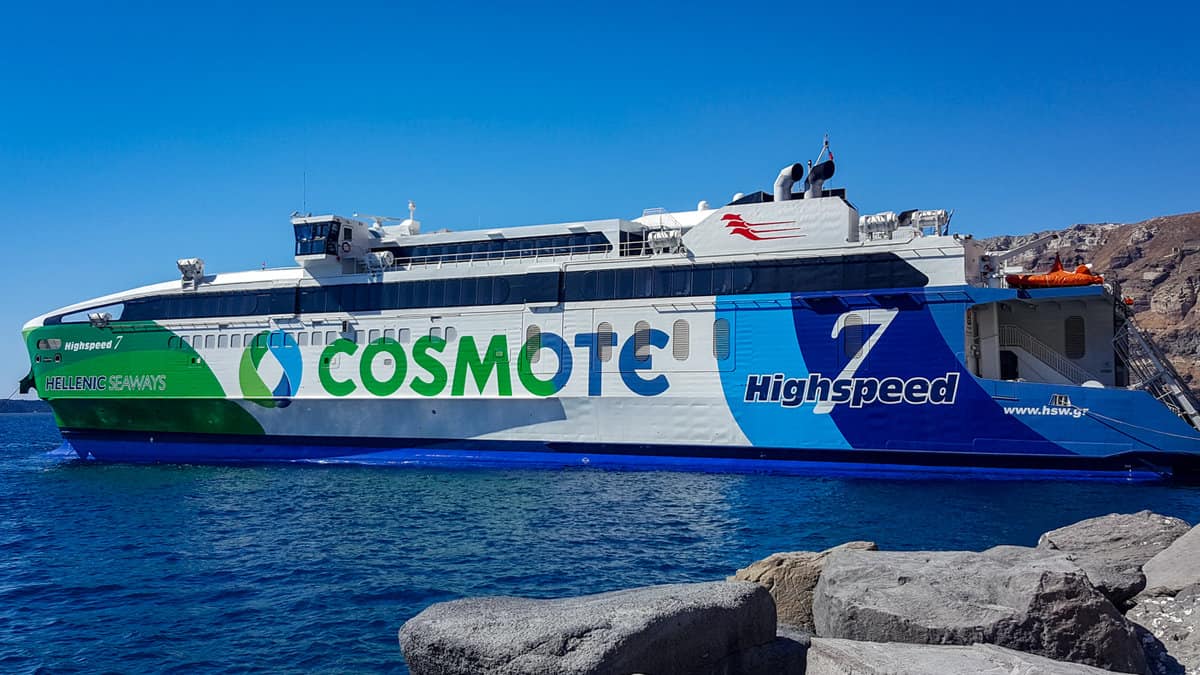
Travelling on Fast versus Slow Ferries
When comparing ferry prices and journey times, as a rule of thumb, ‘fast’ ferries (typically passenger-only catamarans with limited or no outdoor seating) take half the time of slower vehicle ferries but cost twice as much. Thus, you can choose between arriving at your destination sooner at a premium or taking a more leisurely approach and saving some money to spend at your destination.
It’s possible to identify the type of ferry in a couple of ways:
- If you search for ferry tickets online and there are multiple results on the same route, the faster and more expensive boats will likely be high-speed services, while the slower and cheaper ones are the larger vehicle ferries.
- Find the ship’s name and use a website like Marine Traffic to determine its size. For example, Seajets’ Champion Jet 2 is listed as a ‘High-Speed Craft’ with a maximum speed of 34 knots, making it one of the faster ferries.
You can find ferry names and ticket prices using our FerryHopper search box below:
Slower ferries are often much more enjoyable as you can sit outside on the upper deck, basking in the sunshine with a cool drink and the summer breeze on your face. Anyone who has been on a cruise ship will be familiar with this experience, though don’t expect any fancy restaurants, swimming pools or casinos – Greek ferries are very much utilitarian not luxurious!
High-speed ferries are more susceptible to cancellation in bad weather and for causing travel sickness when the sea is a bit rough, so if you aren’t a fan of being at sea, a larger, slower ferry is the safer option as well as being significantly cheaper.
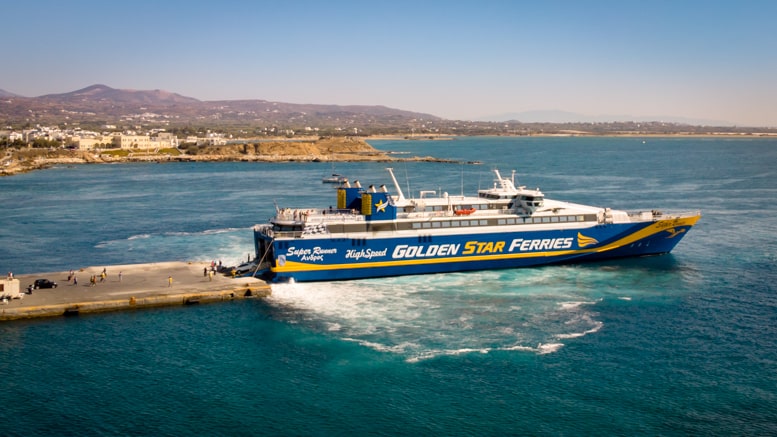
Timing Ferry Connections
Ferries can arrive and depart at any time of the day or night. Whenever you have multiple connections available, it’s worth weighing the cost versus convenience. Cheaper ferries often depart early in the morning or arrive late at night, while more expensive high-speed boats travel during the day.
Given that most hotels require you to check out of your room by midday but won’t let you check in until 2 or 3 pm, we’ve found it’s best to plan your ferry journey around these times. This reduces the time you’ll have to spend without a hotel room to relax in or store your luggage. Of course, finding a ferry that aligns perfectly is not always possible, but try to travel around midday whenever it’s an option.
Booking Ferry Tickets
We’ve written a separate article which details the pros and cons of booking ferry tickets in advance; you can read it here: Greek Ferry Travel Guide.
Part 4: Choosing Your Accommodation
Having chosen which islands you want to visit and how long you intend to stay, choosing accommodation is the next thing to tick off your to-do list. Since ferries can get cancelled in bad weather, there’s an element of risk in booking your hotels far in advance. Some people are happy to book last minute the day before they arrive, but in peak season, you’ll probably find that options are limited, or even non-existent, if you don’t reserve early.
Taking advantage of accommodation with free cancellation can mitigate some of the risks. However, these often have a cut-off date several days before arrival, so they won’t help you if the ferry is cancelled on the day you’re meant to travel, but they give you the flexibility to change plans ahead of time.
Where to stay on each island
Choosing which resort to base yourself at on each island is, once again, largely a personal preference. Some prefer quiet, traditional villages, while others look for more lively beach resorts. One thing we like to factor in specifically when island-hopping is the proximity to the port and ease/cost of transfers. For short stays of 3-4 nights, it can be beneficial to base yourself in the port town – often the island’s capital – to make transfers quick and easy. If your accommodation offers free transfers (you may have to ask), it’s always worth taking advantage of this for the smoothest experience.
However, all islands have a local bus service (we’ve yet to visit one that didn’t). It typically has a schedule that coincides with ferry arrivals to transport visitors to the various towns and villages. This is the cheapest way to get to your accommodation if you aren’t within walking distance of the port (and free transfers aren’t available). Likewise, taxi stations are typically situated at or close to the port and will provide you with a faster and more personal transfer, albeit at a higher cost. Taxis are reasonably priced on most islands and worth considering if you don’t want to take the bus or are travelling in a group of three or four people and can split the cost.
Part 5: Getting Around
Motorbikes, Mopeds, Quads and Cars
With limited time on each island, hiring transportation can be a great way of seeing as much as possible in a short period. Though we wouldn’t advocate motorbikes – Greek roads aren’t the best (some drivers aren’t the most sympathetic to tourists either), and your safety should be more important than saving a few euros – a car or quad bike is an excellent way of getting around. Most rental companies allow you to collect the vehicle early in the morning (8 am isn’t unusual) and return it late into the evening or first thing the next day, so they can be good value if you plan your time well.
Buses and Taxis
Most inhabited islands will have a public bus service to allow locals to get around. During the tourist season (May – September), timetables are padded with extra services to cater for increased demand. As a general rule, most ferry arrivals at the port will have a local bus timed to meet it, and this service should connect with some or all of the major towns and villages on the island. Depending on the island, bus routes can be circular or run back and forth between the main town and smaller villages or beach locations. Buses are the cheapest form of public transport, costing between €1.80 and €4 per ticket.
If you don’t fancy the bus or want to get around more quickly or to an area not accessible by bus, taxis are a decent alternative. Though not as cheap as buses, they are generally affordable, especially if you are travelling in a group or family of 2 – 4 people and can share the cost. Greek taxis are typically silver in colour, often Mercedes Benz, and will have a yellow ΤΑΞΙ sign on top. Most restaurants and hotels will arrange taxis for you if you ask them or provide you with a number to call.
You will usually find taxi ranks in most tourist towns. If there isn’t a vehicle waiting, you may find a printed list of mobile numbers nearby to arrange a collection.
Bicycles
Though we’ve never hired a bike in Greece, many islands have bicycle rental shops with a range of sizes and styles available. Don’t expect them to be brand-new, but they should be serviced and relatively cheap to hire.
Most islands are on the hilly side, so don’t be fooled by the short distances between locations on a map, or you might get caught out climbing some steep hills! Greece is also prone to high temperatures in peak season (July – September), so sun exposure on a bike should be done with care and plenty of suntan lotion!
Part 6: Optimising Travel Times
When travelling between islands, several ferries may be available each day to get you to your next destination. Bear in mind that most hotels require you to check out between 10 a.m. and midday but won’t let you check in before 2 p.m., so it makes sense to use this time for travel where possible.
Look for ferries that depart around lunchtime (or just before) so you can go straight from your hotel to the ferry port, onto the ferry and off to your next hotel without prolonged periods sitting around with all your luggage. Depending on the journey time, these should arrive early to mid-afternoon, allowing you to go straight to your next accommodation without waiting for the room to be ready.
Part 7: Buying Ferry Tickets
I’ve written a separate post about buying ferry tickets, but to summarise, we recommend purchasing tickets once you have arrived in Greece via the local ticket offices. As you arrive at each new destination, buy your onward ticket before you leave the ferry port, or if you are staying more than two or three nights, get it a day or two before you next plan to travel. This gives you flexibility on which ferry you take and avoids the hassle of re-booking if your preferred ferry is cancelled.
Use the search box below to check out available ferry connections. Many Greek ferry operators confirm their routes between March and April each year, so it’s worth checking back later if you don’t see availability for your chosen dates yet.
Part 8: Example Itineraries
Here are some example itineraries to get you started. They are all based on previous trips we’ve taken, but can easily be modified or extended to suit your needs.
Trip 1
- Fly into Athens.
- Rafina ferry to Andros.
- Andros to Tinos.
- Tinos to Mykonos.
- Mykonos to Ios.
- Ios to Santorini.
- Santorini to Crete.
- Fly home (or back to Athens for an onward journey).
Trip 2
- Fly into Mykonos (or Athens and onward flight/ferry to Mykonos).
- Mykonos ferry to Naxos.
- Naxos to Amorgos.
- Amorgos to Mykonos.
- Fly home (or back to Athens for an onward journey).
Trip 3
- Fly into Santorini (or Athens and onward flight/ferry to Santorini).
- Santorini to Folegandros.
- Folegandros to Naxos.
- Naxos to Mykonos.
- Fly home (or back to Athens for an onward journey).
You can choose how many nights to spend on each island. In our case, Trip 1 was over 18 days: read about it here; Trip 2 was six days: read about it here; and Trip 3 was 13 days: read about it here. Please note that ferry connections vary from year to year, so it is possible that the above itineraries are no longer viable or would require additional stops—you should always check ferry schedules before booking accommodations or making firm plans.
General Tips
When planning an island-hopping or multi-destination trip, here are a few things you might want to bear in mind:
- Staying within the same island group will make travelling easier, cheaper and faster. For example, the Cyclades are probably the best for island-hopping due to the number of destinations to choose from and their relative proximity.
- If you want total flexibility, avoid booking accommodation up-front, and you can plan your route while you travel. Some accommodation providers will wait at the ferry port to advertise their rooms to arriving travellers. You can probably bag a bargain here by speaking to a few of them and finding a place that suits your needs and budget.
- Get the busier islands done first. This is our personal preference, but it’s usually nicer to end a holiday on a more relaxed note than you started. By visiting places like Mykonos or Santorini early on, you can then move on to more chilled-out islands and get into the Greek spirit of relaxation.
Want More?
If you want to learn more about island-hopping, check out our new post on island-hopping itinerary planning.


